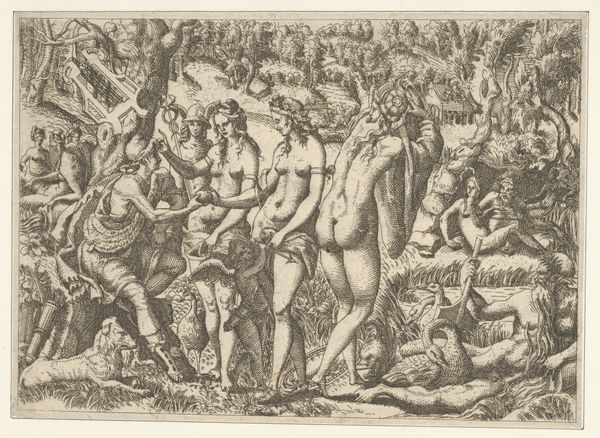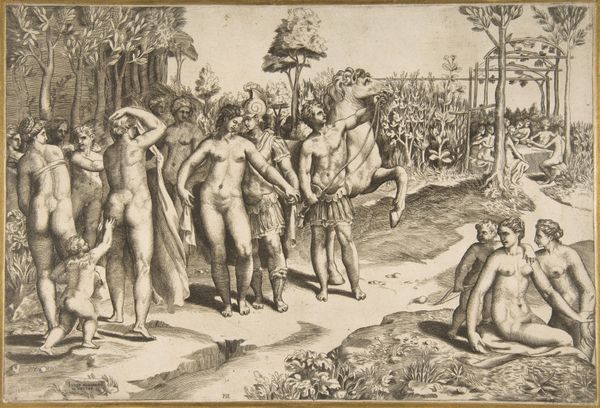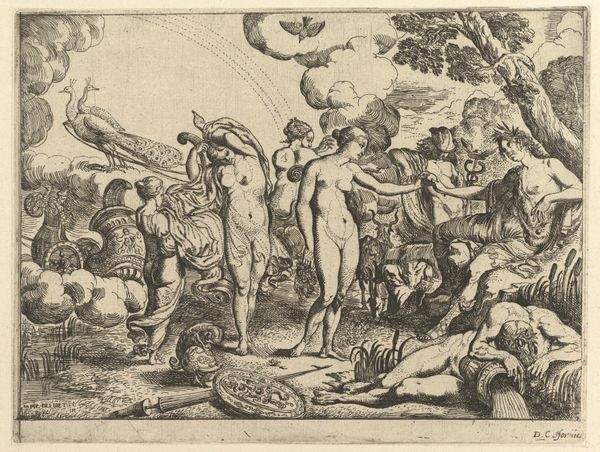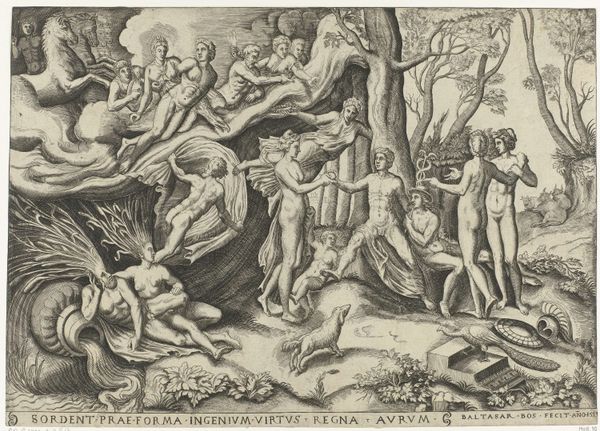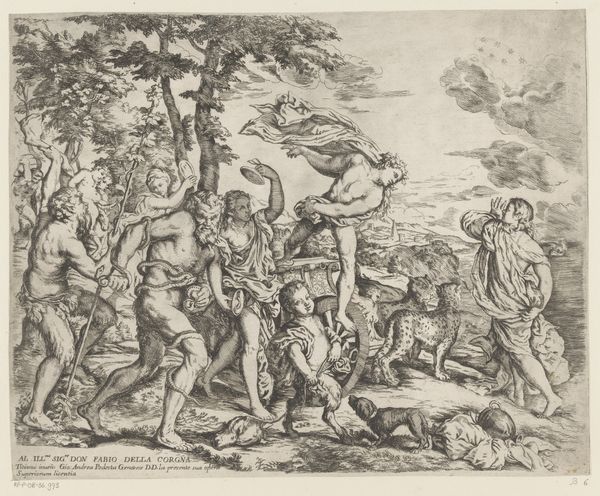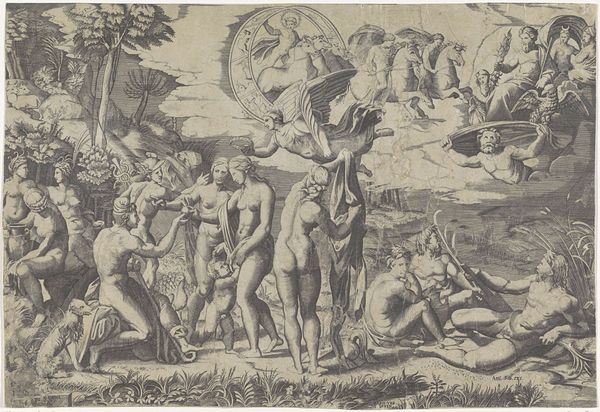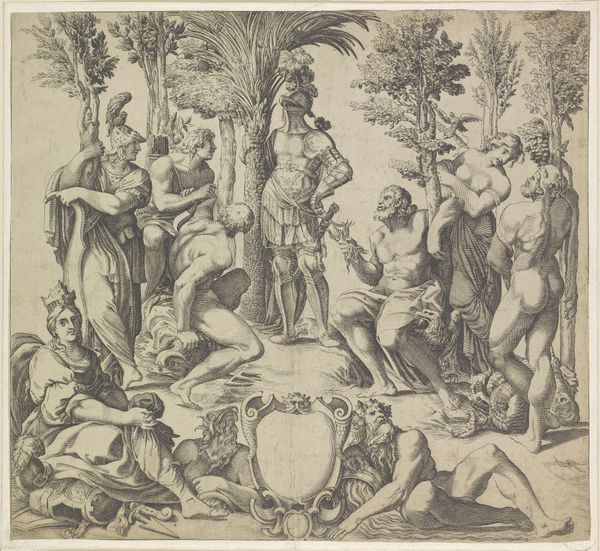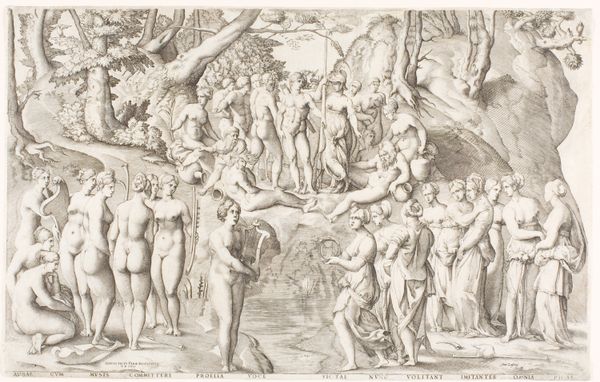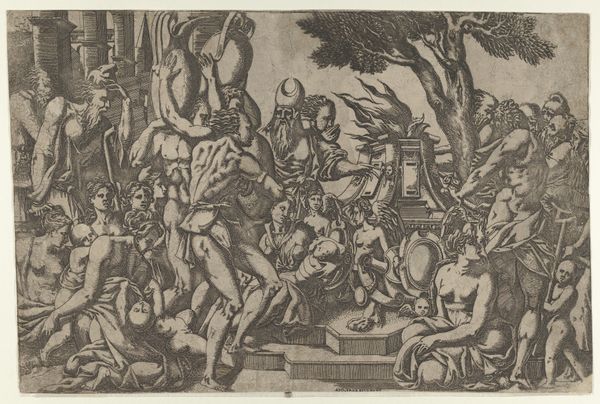
drawing, ink, engraving
#
drawing
#
ink drawing
#
allegory
#
pen drawing
#
landscape
#
figuration
#
11_renaissance
#
female-nude
#
ink
#
group-portraits
#
history-painting
#
engraving
#
male-nude
Dimensions: Sheet (trimmed): 12 1/4 × 16 13/16 in. (31.1 × 42.7 cm)
Copyright: Public Domain
Curator: Jean Mignon's pen and ink drawing, "The Judgment of Paris," dating from the mid-16th century, depicts a pivotal scene from Greek mythology, now residing at the Metropolitan Museum. The story, in essence, illustrates the vanity that leads to the Trojan War. Editor: Visually, the immediate impression is of density. The composition is crowded, a profusion of figures rendered in incredibly fine, almost dizzying detail across the entire picture plane. Curator: That density speaks volumes. The clustered figures – gods, goddesses, and allegorical characters – emphasize the weight of the decision placed upon Paris. Mignon employs a tapestry of symbols to elevate this from a mere beauty contest to a cultural event pregnant with meaning. Notice the significance of the golden apple. Editor: The texture achieved through the hatching and cross-hatching is quite remarkable given the medium. It creates subtle modulations of light and shadow, articulating the forms but also contributing to that overall sense of overwhelming detail, that almost claustrophobic feel, despite the landscape setting. Curator: Precisely. While presented as an idyllic setting, the crowded space evokes a sense of tension and unease— a foreboding of the consequences to come. Note the figures in repose along the lower left. They evoke an atmosphere charged with eroticism—perhaps signifying the deeper, perhaps disruptive undercurrents of the Judgement itself? Editor: It's interesting how the idealized nudes are rendered, a blend of classical form with, dare I say, a hint of Mannerist elongation? Their postures seem calculated, almost theatrical. It is not necessarily naturalistic rendering. This serves to highlight the artifice inherent in such a judgement. Curator: Absolutely. They embody not just physical beauty but culturally prescribed notions of virtue, power, and desirability that fueled centuries of aesthetic theory. These cultural projections resonate deeply when you consider that Paris's decision was, arguably, also influenced by deeply seated beliefs about gender, value, and entitlement. Editor: The sheer meticulousness of the line work really demands sustained viewing. One can get lost in the density and, the almost neurotic energy of the rendering. I am fascinated with the idea that even in the context of mythology the work highlights humanity's ongoing fixation with standards and power. Curator: And the enduring power of stories to reveal hidden anxieties. This piece certainly allows us to engage deeply in a cross-cultural history. Editor: Yes, Mignon’s “Judgment of Paris” provides a lens through which to observe our values about beauty and choice across generations.
Comments
No comments
Be the first to comment and join the conversation on the ultimate creative platform.
